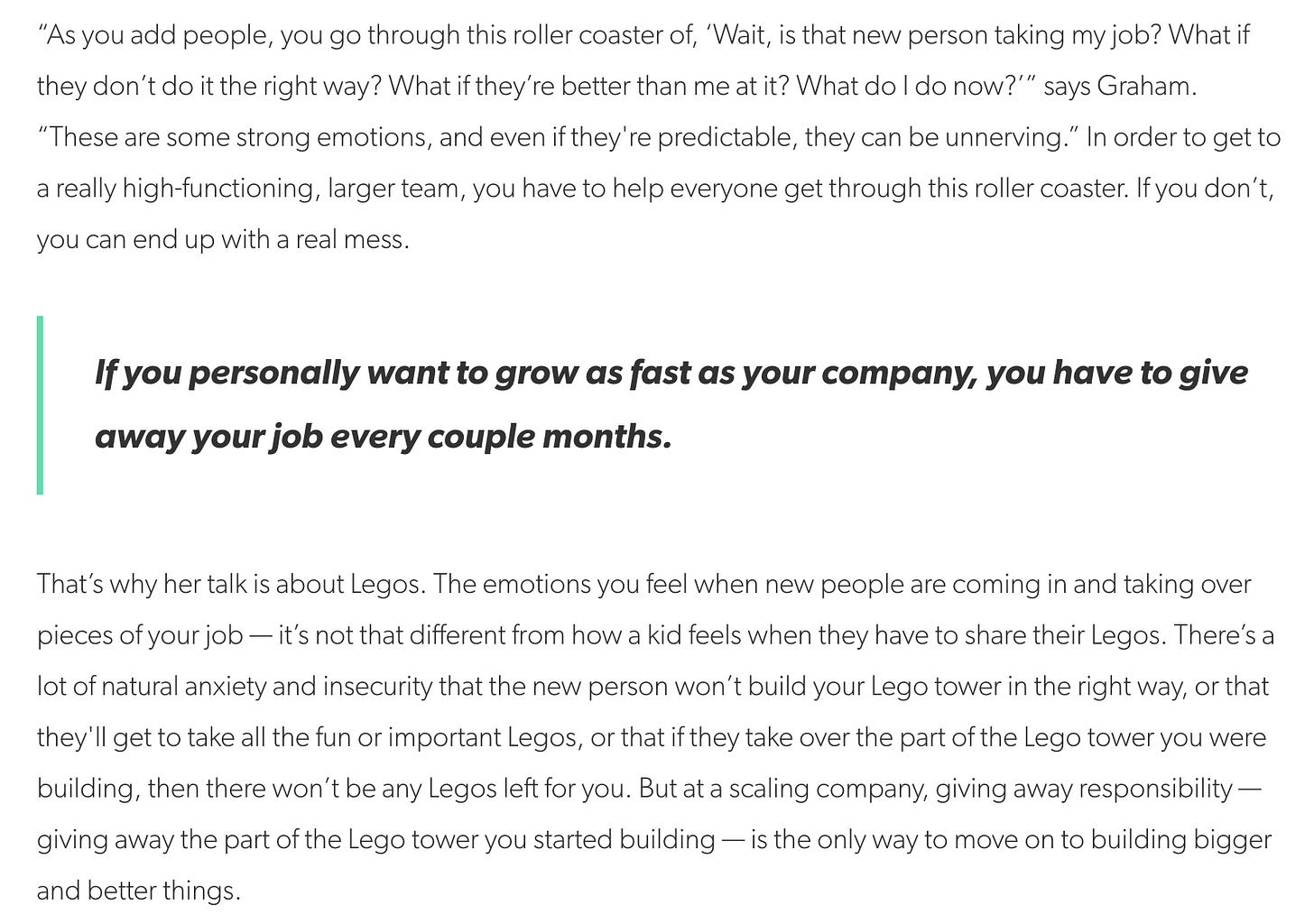Best practices for a new manager - Part 1
A few tips that worked for me when I became a manager

Delegate
Most often, the top contributor in a team, someone who has gained respect and is a linchpin, is promoted to manager. There are situations where we have an external hire who operates as an individual manager and joins the manager role. In either case, great-performing individual contributors level up as managers. After assuming the role, they will continue to do their individual contributor role and also be a manager. This arrangement will be good for the first few weeks. But slowly, they will become the dragging member struggling to cope with the demands of both roles.
They will not be ready to give away their work to others but will instead find ways to manage the demands of both roles. This state of utopia never happens. Earlier, this is understood; it is better for the person and the team. This is not to say that managers should stop being individual contributors and not understand the specifics of their domain.
Once managers begin their roles, they should quickly understand how to start delegating. A famous first-round article, 'Give away your Legos,' beautifully discusses this in detail.

Makers schedule vs Managers' schedule.
'Makers schedule vs. Managers schedule' is a seminal piece by Paul Graham, published in 2009. I wish I had read it much earlier in my career. When I became a manager, I struggled to understand this difference. Even though I started piecing together this, I didn't find it suitable to accept it. Reading this article helped me normalise it, and life became more manageable once I embraced it.
As a new manager, you must accept the new reality and start operating in manager mode. Manager mode helps you prioritise your work across the day and only what is possible in a day. This forcing function helps create focus, and you attach importance to each task.
Having ‘time blocks’ in your calendar with tasks planned against each block helps you calibrate the time needed for each task. This is the best scheduling system out there. Once you set up your calendar, please make it public so your team understands how your work day looks. Don't overdo it with time blocks, and please leave a few blocks free to invite unplanned and serendipitous conversations.
You should also block focus time in your calendar. A chock-a-block calendar is a recipe for burnout.
While you do this, please respect the team members who operate on the makers' schedule. Once they are interrupted, it is difficult for them to return to baseline productivity, let alone peak productivity.
Set expectations
If you are a high-performing individual contributor turned manager, you will be self-driven and result-oriented. The pitfall is to expect your team members to be similar. That is why setting expectations with team members is very important.
Let us assume that the leadership of your company has decided to prioritise the project to improve response times of CRUD APIs of your product by 80%, and your team is the owner of this initiative. As a leader of this team, it is your job to understand -
Why is this important in the overall scheme of things for the company and the customer?
Perhaps, in the recent survey on why customers churn, slower API response times were among the top three reasons. Customers generally want faster response times for their integrations to work and find these APIs not helpful.
What is needed?
It would help you better understand the problem statement and define its scope.
When is it needed?
All such projects come with a timeline expectations from company leadership. Let us say you are given 3 months to deliver on this project with your current team strength. Please correlate the required scope, timeline, and bandwidth and finalise an execution plan.
Set expectations with the team.
Once you have enough details, you should talk to your team and explain the why, what, and when. The team should get enough time to develop the 'How'. Once everything is in place, you should define 'What success looks like'. This is an often-forgotten last step but a must-do step. This step is where projects go for a toss and meet ultimate doom when expectations don't match at delivery time.
We can extend this approach to any interaction related to a deliverable with your team member. Such expectations-setting methods will be helpful in both simple and complex situations.
Drive clarity
Daily, there will be situations where the team will be stuck. It can be as simple as a decision to prioritise upgrading a library and as complex as to rewrite the code base for scalability. As a manager, driving clarity will be a salient part of the job. Clarity comes from going to the bottom of a given situation or a problem. Two techniques have helped to get to this clarity -
First principle thinking
The idea is a very old one. Recently, Elon Musk has championed this and made it famous in the lore of the tech industry. Here is an example of his explanation of the mental model with an example -
I don’t think so I can give a better example than above to augment why first-principle thinking is the best way to gain clarity. Once you get clarity, the next step is to drive clarity by communicating broadly and routinely.
Five whys
Another technique that has helped me is to ask the 'five whys' to understand and get to the root of a problem or situation. Toyota popularised this technique, which is very simple. Just ask ‘why?’ five times, and the answer to the fifth ‘why?’ will give you the utmost clarity.
That's it for this week. I have more to share on this topic and will follow up with Part 2 next week. I would love to hear about what has helped you as a new manager.






